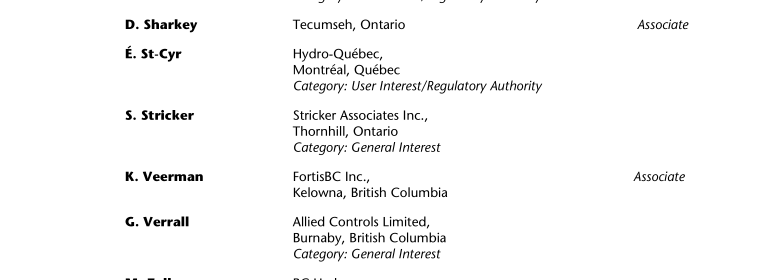CSA C393-12 pdf download – Test methods for measuring power consumption in low and idle power modes of commercial and industrial equipment.
1 Scope 1.1 This Standard specifies methods for measuring electrical power consumption of equipment intended for use in commercial and industrial application when in low power mode(s) (i.e., standby mode, off mode, and network mode) and idle mode. This Standard is applicable to electrical products with a rated input voltage or voltage range that lies wholly or partly in the range 1 00 V a.c. to 347 V a.c. for single phase input and 1 30 V a.c. to 7200 V a.c. for other inputs. Notes: (1) The measurement of energy consumption and performance of products during intended use are generally specified in the relevant product standards and are not covered by this Standard. (2) Where this Standard is referenced by performance standards or procedures, these should define and name the relevant low power modes (see Clause 3) to which this Standard is applied. (3) The inclusion of d.c. powered products within the scope of this Standard is under consideration. 1.2 This Standard does not specify safety requirements. It does not specify minimum performance requirements nor does it set maximum limits on power or energy consumption. The methods described in this Standard are not intended to be used to measure power consumption of products during in-service mode, as these are generally covered by other product standards (see Bibliography for some examples), although the measuring techniques, measurement uncertainty determination, and test equipment specifications may be adapted for such measurements with careful review.
Disconnected mode — the state where all connections to mains power sources of the energy using product are removed or interrupted. Note: Common terms “unplugged” or “cut off from mains” also describe this mode. This mode is not part of the low power mode category. Maintenance mode — for products containing rechargeable batteries, the condition in which the battery has been fully charged and is still connected to the charger. Product mode — a mode where the functions present and whether they are activated, depend on the particular product configuration. Note: The issue of devising appropriate names for product modes is a matter for the relevant product committees. While a product mode name should generally reflect the functions that are activated, they need not contain the terms “standby” or “network”, for example, even where the product mode falls within these mode categories. Low power mode — a product mode that falls into one of the following mode categories: (a) off mode; (b) standby mode; or (c) network mode. Notes: (1) Low power modes are classified into one of the mode categories listed in this definition (where applicable) on the basis of the functions that are present and activated in each relevant mode. Where other functions are present in a product mode (in addition to the ones required for the mode categories specified), these functions do not affect the mode classification. (2) Low power mode categories are defined in order to provide guidance to users of this Standard and to provide a consistent framework for the development of low power modes. (3) Any transition that occurs between modes, either through user intervention or automatically, is not considered to be a mode. Network mode — any product mode where the energy using product is connected to a mains power source and at least one network function is activated (such as reactivation via network command or network integrity communication) but where the primary function is not active. Note: Where a network function is provided but is not active and/or not connected to a network, then this mode is not applicable. A network function could become active intermittently according to a fixed schedule or in response to a network requirement. A “network” in this context includes communication between two or more separate independently powered devices or products. A network does not include one or more controls that are dedicated to a single product. Network mode may include one or more standby functions. Off mode — any product mode where the energy using product is connected to a mains power source and is not providing any standby mode, network mode, or active mode function and where the mode usually persists. An indicator that only shows the user that the product is in the off position is included within the classification of off mode. Note: Guidance on modes and functions is found in Annex A. Standby mode — any product mode where the energy using product is connected to a mains power source and offers one or more of the following user-oriented or protective functions, which usually persist: (a) facilitating the activation of other modes (including active mode) by remote switch (including remote control), internal sensor, or timer; (b) continuous function: information or status displays including clocks; and (c) continuous function: sensor-based functions. Note: Guidance on modes and functions is found in Annex A. A timer is a continuous clock function (which might be associated with a display) that provides regular scheduled tasks (e.g., switching) and that operates on a continuous basis.CSA C393-12 pdf download.
